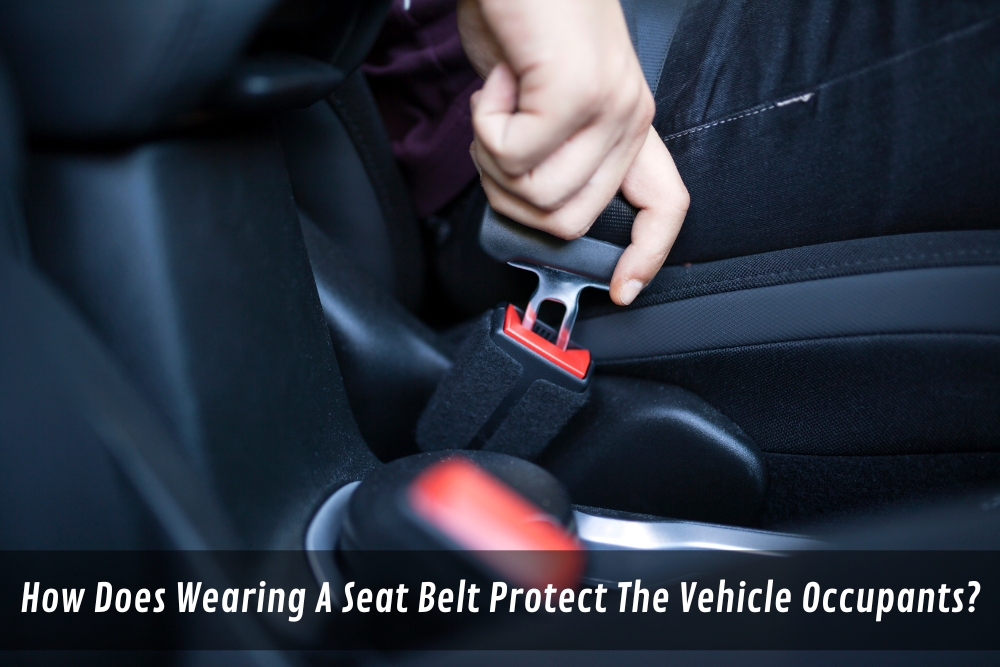How Does Wearing A Seat Belt Protect The Vehicle Occupants?

Are you aware of the life-saving benefit of wearing a seat belt? Or, have you ever wondered why you are required to buckle up at all times?
The development and introduction of seat belts into cars revolutionised road safety. Today, across countries, it is a legal requirement for vehicle occupants to wear a safety belt when travelling in a car or truck. The effectiveness of wearing seatbelts has been proven many times over through research and statistical data.
This article will explain how wearing a seatbelt can significantly protect a vehicle occupant from more serious injury in collisions and other road incidents. By understanding the mechanics of how seatbelts work, we can better understand their importance in keeping us safe while on the roads.
How does wearing a seat belt protect you in collisions?
Wearing a seatbelt is an important safety measure for all occupants of motor vehicles in Australia. It prevents occupants from being ejected from the vehicle during a collision, which is a major cause of fatal injuries. In addition, seat belts reduce the risk of serious injury by distributing crash forces over the strongest parts of the body, such as the hips, chest, and shoulders.
In Australia, a seat belt is mandatory for all drivers and front seat passengers, and children must be restrained in a child restraint or booster seat appropriate for their age and size. Failing to wear a seatbelt can result in demerit points on a driver’s licence and fines.
Studies have shown that wearing a seat belt significantly reduces the chance of death or critical injury in a motor vehicle crash. The correlation between seat belt use and injury risk is well established, and mandatory usage has contributed to a significant reduction in road traffic injuries and fatalities in Australia.
In conclusion, wearing a seat belt is a crucial safety measure that can protect drivers and passengers from serious injury or death in the event of a motor vehicle crash. It is an essential part of a vehicle’s safety equipment and should always be worn by all occupants, including back-seat passengers.
What are the types of seat belt protection?
In Australia, there are several types of seat belt protection systems designed to keep occupants safe in a vehicle collision, including:
-
Lap belts
These are belts that go across the lap and are designed to prevent occupants from being thrown forward in the event of a crash.
-
Sash belts
These are belts that go across the chest and are designed to keep the upper body from moving forward.
-
Three-point belts
These belts consist of a lap belt and a sash belt and are designed to offer the best protection in a crash. They are commonly used in the front seats of vehicles.
-
Booster seats
These are child car seats that elevate the child and position the seat belt correctly over their shoulder and lap.
-
Child restraints
These are specially designed seats for infants and young children that offer extra protection in the event of a crash.
In Australia, seat belts are required on all new school buses. They are typically lap-sash seat belts and are designed to improve safety for children during transportation.
What are the consequences of not wearing a seat belt?
Not wearing a seatbelt can have serious consequences in the event of a motor vehicle crash. Some of the consequences of not wearing a seatbelt include:
-
Increased risk of injury or death
Seat belts are designed to reduce the risk of injury or death in a crash. If you don’t wear a seat belt, you are more likely to suffer serious injuries. You can even die in a crash.
-
Ejection from the vehicle
If an accident occurs, you may be forcibly expelled from the vehicle, which can lead to severe injuries or fatalities.
-
Impact on other passengers
You may become a projectile in the event of a crash, potentially causing injury to other passengers in the vehicle.
-
Legal consequences
In many countries, not wearing a seat belt is against the law. And you can be fined or receive demerit points on your driver’s license if you are caught.
-
Increased insurance rates
If you are in a crash, your insurance rates may go up as a result.
Conclusion
In summary, wearing a seat belt is a crucial safety measure. It can significantly reduce the risk of fatal injuries in motor vehicle crashes. It protects the vehicle occupants from being ejected from the vehicle and hitting the steering wheel, dashboard, or windshield. By restraining the body during a collision, seat belts prevent the passengers from experiencing crash forces that can cause severe injuries or death.
It is essential to always wear a seat belt. No matter how short the trip or how safe the road conditions may seem. By doing so, we can ensure our safety and reduce the risk of harm to ourselves and others on the road. Remember, your seat belt is your first line of defence against the unexpected. So, buckle up and stay safe on the road.
Contact Sege Seats today for more information about the services we offer to ensure your school bus seats are safe, comfortable and compliant with all applicable regulations.





